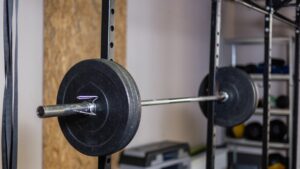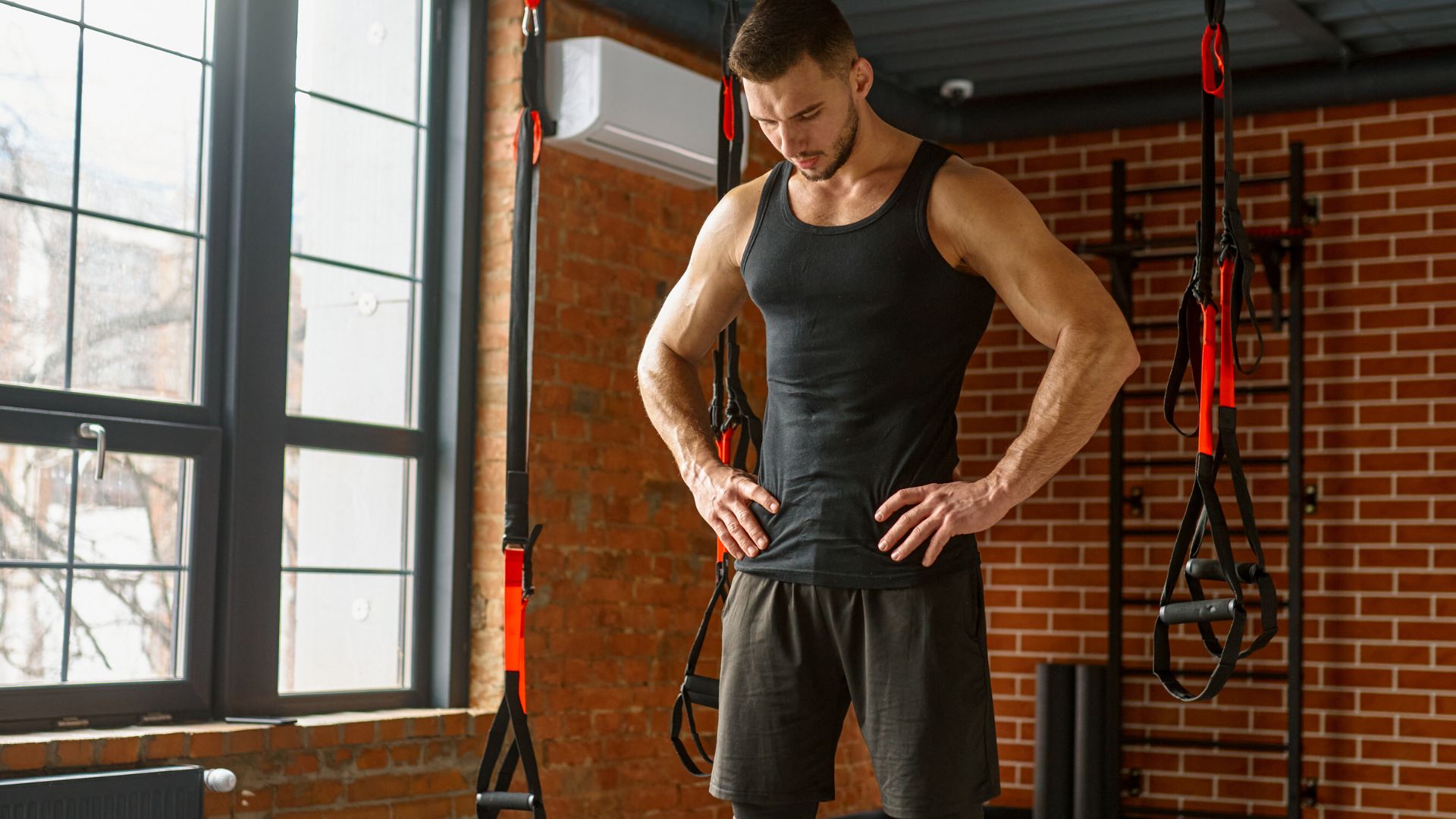Understanding the Back Squat:
The back squat is a compound movement targeting multiple muscle groups, primarily the quadriceps, hamstrings, glutes, and lower back.
It’s not just about the weight lifted but also about form, technique, and individual differences. Factors such as training history, body composition, genetics, and lifestyle play pivotal roles.
Contextualizing the Struggle:
When assessing whether a 24-year-old should struggle with an 80kg back squat, it’s crucial to consider various elements.
Firstly, experience matters significantly. Someone relatively new to weightlifting might find an 80kg squat challenging, while others with years of training might handle it more comfortably.

Training Background and Consistency:
Consistency in training, progressive overload, and proper form are key components for strength gains. Those consistently engaging in resistance training with a structured program focusing on strength development might find the 80kg more manageable.
Individual Variations:
Individual differences in body composition, muscle fiber types, and limb proportions also affect squat performance. Some individuals naturally excel in strength-based exercises, while others might need more time and effort to reach similar milestones.
Importance of Technique:
Technique plays a vital role in squatting. A well-executed squat, regardless of weight, ensures safety and optimal muscle engagement. Struggling with an 80kg squat might signify a need to refine technique rather than solely lacking strength.
Setting Realistic Goals:
Setting realistic and personalized goals is crucial. Comparisons with others’ progress or industry standards might be misleading. Instead, focus on personal improvements and gradual progression.
In other words:
So, should a 24-year-old struggle with an 80kg back squat? It depends. There’s no one-size-fits-all answer. Factors like experience, training background, individual differences, and technique significantly impact squat performance. Struggling with a weight doesn’t necessarily indicate a lack of capability but could highlight areas for improvement. Emphasizing consistent training, proper form, and personalized goals paves the way for a fulfilling fitness journey.
External Links for Further Reading:
- The Science Behind Strength Training Techniques
- Understanding Muscle Fiber Types and Their Impact on Training
- Tips for Improving Squat Technique
Remember, fitness is a journey unique to each individual. Struggles can be stepping stones to progress, and consistency combined with knowledge and dedication often leads to desired outcomes.
Strategies for Improving Back Squat Performance:
1. Focus on Technique:
Perfecting squat form is foundational. This includes maintaining proper foot placement, spinal alignment, depth, and barbell positioning. Working with a coach or watching instructional videos can help refine technique.
2. Gradual Progression:
Incremental increases in weight allow the body to adapt gradually. Don’t rush to lift heavier weights; instead, prioritize mastering the current weight with proper form before progressing.
3. Accessory Exercises:
Incorporating accessory exercises like lunges, leg presses, and hip thrusts can strengthen supporting muscles, enhancing squat performance.
4. Mobility and Flexibility Work:
Adequate mobility in the ankles, hips, and thoracic spine is crucial for a proper squat. Including mobility drills and stretches in your routine can improve flexibility and range of motion.
5. Consistency and Recovery:
Consistent training combined with adequate rest and recovery is vital. Muscles need time to repair and grow stronger after workouts.
6. Nutrition and Hydration:
A balanced diet with sufficient protein, carbohydrates, and hydration supports muscle growth and recovery, essential for strength gains.
7. Mind-Muscle Connection:
Concentrate on engaging the targeted muscles during squats. Developing a mind-muscle connection helps in maximizing muscle activation.
8. Patience and Persistence:
Progress in strength training takes time. Celebrate small victories along the way and stay committed to the process.
Final Thoughts:
The journey to improving back squat performance involves a combination of factors, including technique, consistency, progressive overload, and holistic fitness practices. Embrace the journey, focusing on gradual improvements rather than comparing oneself to others or arbitrary standards.
Remember, it’s not just about lifting a specific weight at a certain age but about the journey towards personal growth, strength, and overall well-being. Embrace the process, stay persistent, and enjoy the progress made along the way.
Keep exploring, learning, and refining your approach to achieve your fitness goals!
External Links for Further Reading:
- 10 Tips for Increasing Squat Depth
- The Importance of Recovery in Strength Training
- Nutrition for Strength Training: What to Eat Before and After Workouts
The path to mastering the back squat involves dedication, patience, and a holistic approach to training. Embrace the process and enjoy the journey towards becoming stronger and more resilient.
Comparison tabular on this topic
Here’s a comparison table to highlight key aspects between struggling and excelling in a 80kg back squat for a 24-year-old:
| Aspects | Struggling with 80kg Back Squat | Excelling with 80kg Back Squat |
|---|---|---|
| Experience | Limited or inconsistent training | Consistent and structured training with progressive overload |
| Training Background | Relatively new to weightlifting | Years of focused resistance training |
| Form and Technique | Form might need refinement | Excellent form, emphasis on technique |
| Strength Development | Working on building strength | Already developed significant strength |
| Individual Factors | Varied body composition and muscle engagement | Optimal muscle engagement and efficient movement patterns |
| Progression Rate | Slow progress in increasing weight | Steady progression with weights |
| Supporting Exercises | Limited focus on accessory exercises | Incorporates diverse exercises targeting muscle groups |
| Recovery Practices | Inconsistent rest and recovery | Prioritizes adequate rest and recovery |
| Mind-Muscle Connection | Developing the connection | Strong mind-muscle connection for optimal muscle engagement |
| Nutrition Emphasis | Basic focus on diet | Balanced nutrition to support muscle growth and recovery |
This table highlights the differences between struggling and excelling in a back squat with an 80kg load for a 24-year-old, encompassing various aspects from training background to recovery practices and beyond. Remember, progression is individual, and consistent effort and dedication are key regardless of the starting point.
Wrapping up
Embrace your unique path. Struggling with a weight isn’t a sign of weakness but a chance to refine technique, build strength, and set achievable goals. Each rep, each session, and each milestone achieved is a step forward on your fitness journey.
Remember, comparison with others might distract from your progress. Focus on your journey, celebrate your victories, and stay committed to consistent training, proper form, and holistic wellness practices.
Whether you’re just starting or well on your way, the 80kg back squat is not just a weight on a barbell; it’s a testament to your dedication, perseverance, and determination. Keep pushing, keep learning, and enjoy the process of becoming the strongest version of yourself.
Keep squatting, keep striving, and keep believing in your ability to progress. Your journey is unique, and every step forward is a testament to your strength, resilience, and commitment. Cheers to your fitness journey and the victories waiting ahead.

Hey there, it’s Mike Rrsq, the Editor-in-Chief over at Jsquat.com, and I’m absolutely obsessed with all things squat fitness! I’ve been lucky enough to get some serious recognition for my work in this field. With a solid background in the fitness and wellness industry, I’ve been there right from the get-go, helping shape this website into what it is today.
You see, I’m not just the boss around here; I’m also a passionate contributor. I love sharing my insights through my articles, and trust me, they’re not your run-of-the-mill stuff. Each piece I write is a labor of love, filled with my expertise and real-world experience in the fitness universe. So, if you’re into fitness and looking for some inspiration, you’re in the right place!

